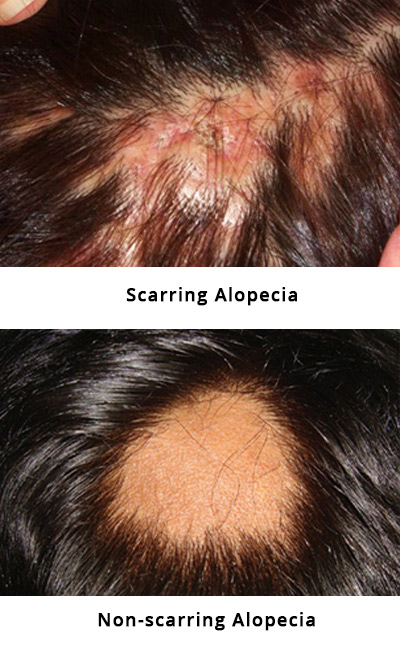Alopecia Areata – Hair Loss in patches
It is a condition where a person loses hair in spots or patches from any part of the scalp or body. Alopecia Areata can be infectious or auto-immune in nature.
Infectious Alopecia Areata
Amongst various scalp infections, the one that causes hair loss in patches is Ringworm. Ringworm is a fungal infection that can occur anywhere on the body. Wherever it develops – on the scalp, beard or on the body, it causes circular patches of hair loss and is called Tinea Capitis. The fungus gets into the hair fibers in the affected area and these hairs become brittle and break off easily leaving a bald patch.
Ringworm is contagious. It can be passed from one person to another by direct skin-to-skin contact. You can also catch ringworm through contact with contaminated items such as combs, unwashed clothing, pillow covers and shower or pool surfaces. You can catch it from pets that carry the fungus, and cats in particular are common carriers.
Treatment for ringworm varies depending on the particular fungus involved.

Auto-immune Alopecia Areata
In the auto-immune variety, the body’s immune system attacks and destroys its own hair follicles resulting in patchy hair loss. Unlike the ringworm infection, the auto-immune alopecia areata is not contagious.
In the auto-immune variety, the trigger could be an infection which can be fungal, viral or bacterial. The infection may not be severe but it makes the body produce certain antibodies. The function of these antibodies is to kill the infection but instead it starts destroying the hair follicles. From a localized area, the antibodies then circulate throughout the body causing widespread destruction of hair follicles.
It is not very clear as to why the immune system malfunctions in some people and not in others. But people with a family history are more likely to suffer from this condition. It can equally affect both men and women and is commonly found in people younger than 20.
Auto-immune Alopecia Areata has 2 types. One is the scarring alopecia in which the skin is thickened and scarred with loss of hair follicles. The second is the non-scarring alopecia wherein the hair strand is lost but the follicles are intact, making it the reversible type.

How is Alopecia Areata diagnosed?
Diagnosis is made on the basis of the presenting symptoms. Tricho Analysis shows small exclamation-mark hairs. Characteristic black dots which are the destroyed hairs in the hair follicle opening can also be seen.
What is the treatment for Alopecia Areata?
Treatment is depending on the type and cause of alopecia. The condition can run an erratic course with frequent recurrences and remissions. It can have a sudden onset starting with a single patch, overnight multiplying into multiple patches and can spread like wild fire leading to hair loss from all over body. For example, in a case of a young girl about the age of 18 years old, living in rural Karnataka, the condition started with a single bald patch on her scalp. In the next few days each time she washed or combed her hair, a chunk of hair strands around 1000-2000 hairs simple fell off, almost as if the hairs were glued to the scalp and the glue was wearing off. Within 3 months, from nearly having waist long hair, she ended up with complete hair loss, not a single strand of hair on any part of her body. This is the rapidity and suddenness with which this condition is seen. Most cases however are not severe, but the ability of this condition to spread or relapse even while on medication remains unmatched by any other hair disorder. Alopecia Areata in stages one and two shows the best response and as it spreads to the other parts of the body the chances of effective control come down.


